 Be Inspired Blog - Arizona
Be Inspired Blog - Arizona
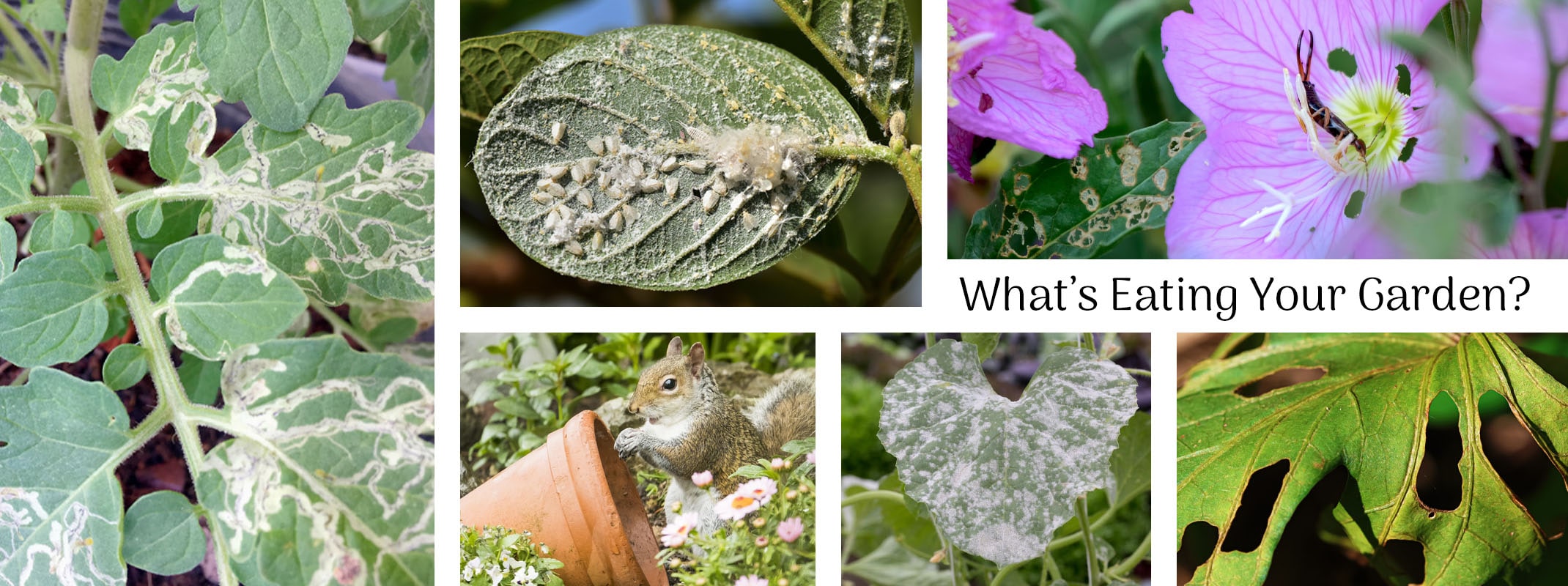
A Guide To Garden Pests - Discover What's Eating Your Garden
Is something eating your precious plants? From voracious chewers to sap-sucking and leaf-mining intruders, we can help you identify the problems and find effective solutions to bring your garden back to peak health.
Pest That Like to Nibble and Chew Through Your Garden
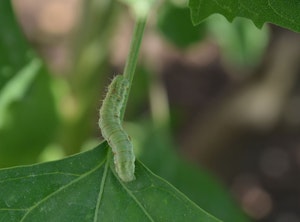 Cabbage Loopers
Cabbage Loopers
- Identification: Cabbage loopers are green caterpillars with a looping movement when they crawl. They blend in with the leaves they feed on. They feed on the foliage of plants in the cabbage family, such as broccoli, kale, and cabbage.
- Damage: They eat foliage, causing large irregular holes and skeletonization of leaves.
- Controls: Encourage natural predators like birds and beneficial insects such as lacewings. Handpick the caterpillars.
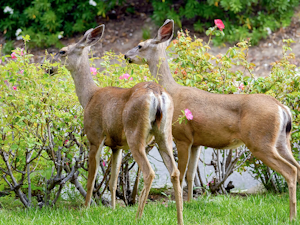 Deer
Deer
For those of you who contend with deer in Northern Arizona, here are some helpful tips for detering them.
- Identification: Deer are large mammals with slender bodies, long legs, and branching antlers (in males).
- Damage: They eat leaves, stems, buds, and fruits of many garden plants, causing significant damage.
- Controls: Install tall, sturdy fences around the garden, at least 8 feet high. Use deer-resistant plants and apply repellents that contain substances like garlic, hot pepper, or predator urine. Scare tactics like motion-activated sprinklers or noise devices can also deter deer.
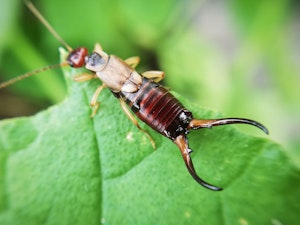 Earwigs
Earwigs
- Identification: Earwigs are reddish-brown insects with pincers at the end of their abdomen.
- Damage: They primarily feed on decaying organic matter but may damage plants by chewing on leaves, flowers, and fruits.
- Controls: Place damp, rolled-up newspaper or cardboard traps in the garden. Check and remove the trapped earwigs daily. Reduce hiding places by cleaning up garden debris. Sluggo Plus is a formula that combines iron phosphate with Spinosad, and it’s great for killing earwigs and many other common plant pests.
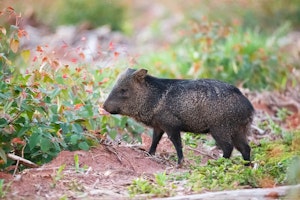 Javelinas
Javelinas
- Identification: Javelinas are medium-sized mammals resembling wild pigs, with a stocky build, dark gray to blackish coat, and a collar of long, coarse hairs around their neck.
- Damage: Javelinas can cause significant damage in Arizona gardens, consuming plants, uprooting foliage, and trampling garden beds, leading to substantial loss.
- Controls: Effective controls for javelinas in gardens include building sturdy fences, using motion-activated lights or sprinkler systems, removing potential food sources, using repellents with strong odors, and consulting local authorities for non-lethal methods of control. Learn More
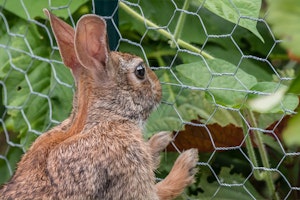 Rabbits
Rabbits
- Identification: Rabbits are small mammals with long ears and powerful hind legs.
- Damage: They feed on young, tender plants, causing severe damage by nibbling or eating entire seedlings.
- Controls: Install fences around your garden to keep rabbits out. Use wire mesh with small openings buried at least 6 inches deep. You can also try plant-based repellents, coyote urine, or scare tactics like noise-making devices or visual deterrents. Learn More
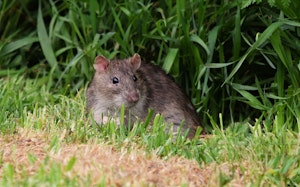 Rats
Rats
- Identification: Rats are small to medium-sized rodents with long tails, pointed snouts, and large ears.
- Damage: They can eat fruits, vegetables, seeds, and damage plants. They may also dig burrows in the garden.
- Controls: Eliminate food sources by securely storing garden produce and removing fallen fruits or vegetables. Seal off potential entry points to your garden or use fences. Traps and bait stations can also be effective, but exercise caution to prevent harm to non-target animals.
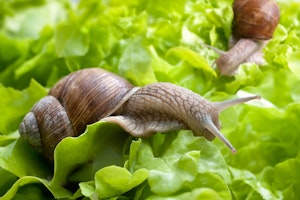 Snails and Slugs
Snails and Slugs
- Identification: Snails and slugs are mollusks with soft bodies and a slimy texture. They leave behind silvery slime trails and feed on a wide variety of plants.
- Damage: They eat leaves, stems, and fruits, leaving irregular holes or completely devouring seedlings.
- Controls: Use physical barriers like copper tape or Diatomaceous Earth around vulnerable plants. Iron Phosphate Formulas like SluggoPlus and Snail Bait are pelletized formulas that slugs and snails will eat up, effectively killing them. It lasts for four weeks at a time and poses no threat to pets or other wildlife. Handpick and dispose of them, especially during the evening or early morning when they are most active. You can also set up beer traps.
 Squirrels
Squirrels
- Identification: Squirrels are small to medium-sized rodents with bushy tails and sharp teeth.
- Damage: They feed on various fruits, nuts, seeds, and can cause damage to plants by digging holes or chewing on bark.
- Controls: Use physical barriers like netting or cages to protect vulnerable plants. Prune tree branches away from structures to reduce access points. Traps and repellents can also be effective, but make sure to follow local regulations and guidelines.
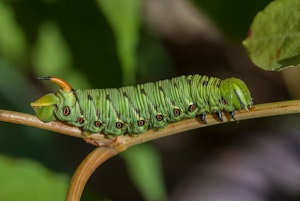 Tomato Hornworms
Tomato Hornworms
- Identification: Tomato hornworms are large, green caterpillars with white diagonal stripes on their bodies and a horn-like projection on their rear end.
- Damage: They feed on tomato, pepper, eggplants and related plants, consuming leaves and fruits. Their feeding can defoliate plants and cause significant fruit damage.
- Controls: Handpick and remove them from plants. You can also encourage natural predators like birds.
Destructive Pests That Suck – Literally
 Aphids
Aphids
- Identification: Aphids are small, soft-bodied insects that come in various colors like green, yellow, or black. They are small, soft-bodied insects that cluster on the undersides of leaves, sucking sap from plants. Aphids reproduce rapidly and can cause distortion and stunting of plant growth.
- Plants they target: Aphids infest a wide range of plants, including vegetables, fruits, and ornamentals.
- Controls: Use a strong jet of water to dislodge aphids from plants. Encourage beneficial insects like ladybugs, lacewings, or parasitic wasps. Bonide Insecticidal Soap spray, Bonide Horticultural Oil, and Bonide Neem Oil solution can all be safely used outside without posing a threat to beneficial wildlife.
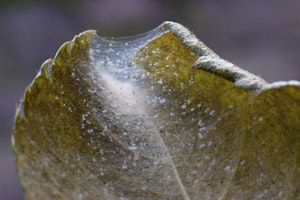 Mites
Mites
- Identification: Mites are very small arachnids that may be difficult to see without magnification. They come in various colors, including red, yellow, green, or brown.
- Plants they target: Mites commonly infest a wide variety of plants, including fruits, vegetables, and ornamentals.
- Controls: Spray affected plants with a strong jet of water to dislodge mites. Apply Bonide's Insecticidal Soap, Neem Oil, or Horticultural Oils. Encourage predatory mites, ladybugs, or lacewings to control mite populations.
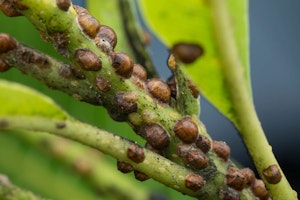 Scale
Scale
- Identification: Scales are small, immobile insects that attach themselves to plant stems, leaves, or fruits. They have a protective shell-like covering that varies in color and shape, resembling scales or bumps.
- Plants they target: Scales infest a wide range of plants, including ornamentals, fruit trees, and woody plants.
- Controls: Use a soft brush or cloth to physically remove scales from plants. Prune heavily infested branches or stems and dispose of them. Encourage beneficial insects like ladybugs or lacewings, as they are natural predators of scales. You can use Bonide Horticultural Oil in spring or summer on deciduous plants when most scales are in their nymph stage. Spray any spots along the branches and shoots where you can see scale insects, and spray the undersides of the leaves, too—it’s one of the most common hiding spots for plant pests!
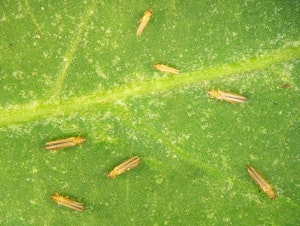 Thrips
Thrips
- Identification: Thrips are tiny, slender insects with fringed wings. They are usually brown or yellowish in color.
- Plants they target: Thrips feed on a wide range of plants, including flowers, vegetables, and fruits.
- Controls: Remove and destroy heavily infested leaves. Prune affected flowers or buds. Introduce predatory insects like predatory mites or minute pirate bugs. Use insecticidal soaps or neem oil if necessary. A contact insecticide, like horticultural oil, or a Spinosad formula, like Captain Jack’s Deadbug Brew, will kick those thrips to the curb.
 Whiteflies
Whiteflies
- Identification: Whiteflies are tiny, winged insects that are usually white or pale yellow. They are small, winged insects that congregate on the undersides of leaves, sucking sap from plants. Whiteflies excrete a sticky substance called honeydew, which can attract ants and lead to the growth of sooty mold.
- Plants they target: They commonly infest plants like tomatoes, peppers, cucumbers, and many ornamental plants.
- Controls: Use yellow sticky traps to monitor and trap adult whiteflies. Bonide's Insecticidal Soap, Neem Oil, or Horticultural Oils will all work fine. Encourage natural predators like ladybugs and lacewings.
Leaf Miner Infestation
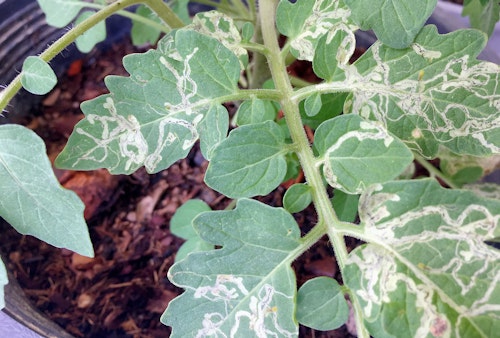 Leaf miners are a type of pest that can cause significant damage to garden plants, including Kangaroo Paw plants. Leaf miners are the larvae of various insect species, including moths, flies, and beetles. They got their name because they burrow and feed inside the leaves, creating tunnels or mines.
Leaf miners are a type of pest that can cause significant damage to garden plants, including Kangaroo Paw plants. Leaf miners are the larvae of various insect species, including moths, flies, and beetles. They got their name because they burrow and feed inside the leaves, creating tunnels or mines.
Identification — Leaf Miner Damage Appears as:
- Serpentine or meandering tunnels on the leaves
- Winding trails or blotches on the leaves
- Affected leaves may turn yellow, brown, or develop dry patches
- Caused by various insect species, including flies, moths and beetles
Damage and Impact: Infestations can weaken the plant, affecting its overall health and vigor. Damage to the leaf tissue is a result of reduced photosynthesis. Plants such as Kangaroo Paws are susceptible to leaf miner.
Prevention and Controls:
- Maintaining a clean garden by removing and destroying affected leaves and practicing good sanitation will help prevent and control leaf miner infestations.
- Monitor plants regularly for signs of leaf miner activity.

